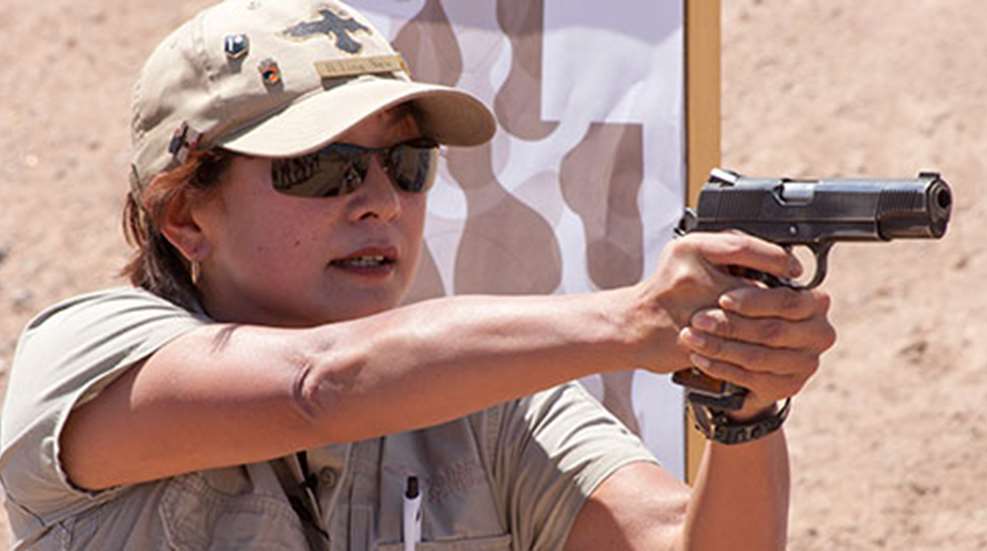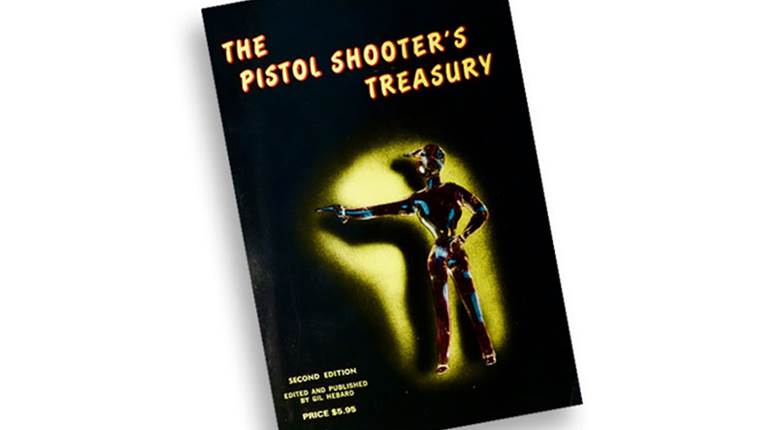
It’s no secret that, to improve any skill, you’ve got to practice, practice and practice some more. So, if you want to be a better gunfighter, you’ve got to dedicate yourself to practicing with your sidearm-and yes, there’s a right way to go about it. Here are 10 suggestions that can help focus your practice.
1. Learn and understand the safety rules. I recommend the Four Safety Rules. Adhere to them without fail, and be able to do so without fear. This is the foundation of being in control of yourself, and thus, your firearm. With these, you control your situation.
2. Learn how your firearm works-inside and out, backward and forward. You don’t have to learn every part, or every function, but you should understand it well enough to be able to explain the main buttons and levers, and the basic mechanics of how it fires.
3. Get aggressive. Now that you get it-the firearm, that is (see No. 1 and No. 2, above), there’s no reason to be afraid of it in your hands. Yes, there will be some recoil-especially if you need to fire more than once-which is something you always should be prepared for. So get strong on the gun. Understand that your body position can help or hinder your ability to manage it, and learn to use your entire body properly.
4. Focus on the job at hand. As Jeff Cooper used to say, “The purpose of shooting is hitting.” Be in the present (you never knew that yoga and meditation practice would help, did you?). Don’t worry about the noise, don’t think about the recoil. And, to keep your eye properly on your sights, don’t look for the holes! As much as is humanly possible, imagine that target out there is a bad person intent on harming your most beloved. You need to stop it, and you have the power to do it. Apply the mechanics you were taught, and get it done.
5. Take breaks when you want to. Throughout your shooting session, give yourself time to process the mental and physical efforts you’re exerting-these can be considerable if you’re training properly. Don’t be in a rush to finish a sequence or a session.
6. Don’t worry about anything except you. Don’t worry about people watching you. Don’t worry about being slower or faster than anyone else. Don’t compare your targets, times and calibers to anyone else’s.
7. Less can be more: Pick one or two specific things you want to practice and if practicing live, limit yourself to 50 rounds of handgun practice, or 25 rounds of single projectile with your long gun or 50 rounds of wingshooting. But think hard about every singly shot, before, during and after. It is indeed about quality over quantity, and too many of us completely overlook that when we’ve taken the trouble to go to the range. Problem is, non-thoughtful shooting, especially in large quantities, may only serve to reinforce bad habits-and sometimes, to develop new bad habits! (If engaging in dry practice, stop after 10 or 15 minutes, maximum; everything else applies.)
8. Keep a training journal. Nothing too intense or serious-but make notes about how your session went, especially regarding mistakes, as well as your breakthrough, “aha” moments. Do it the same day.
9. Do everything-from handling the firearm in its case or bag, to loading and unloading it-as you would in the field. Don’t allow yourself to take shortcuts because you’re “practicing,” or “at the range.” Remember-under stress, you’ll do whatever you’ve done most recently, and/or whatever you’ve done most frequently. Make them one and the same-and make them perfect.
10. Be positive. I know, so corny, right? But it’s a cliché for a reason. Sometimes when we’re learning something new, and we’re not as good at it as we think we should be, we use self-deprecation to soften the blow, or distract others from our perceived foibles. Other times, when we’re not feeling as confident as we’d like to be, we let our mistakes underline our misgivings, which only serves to undermine our confidence. Take yourself seriously, have patience and enjoy yourself.





































